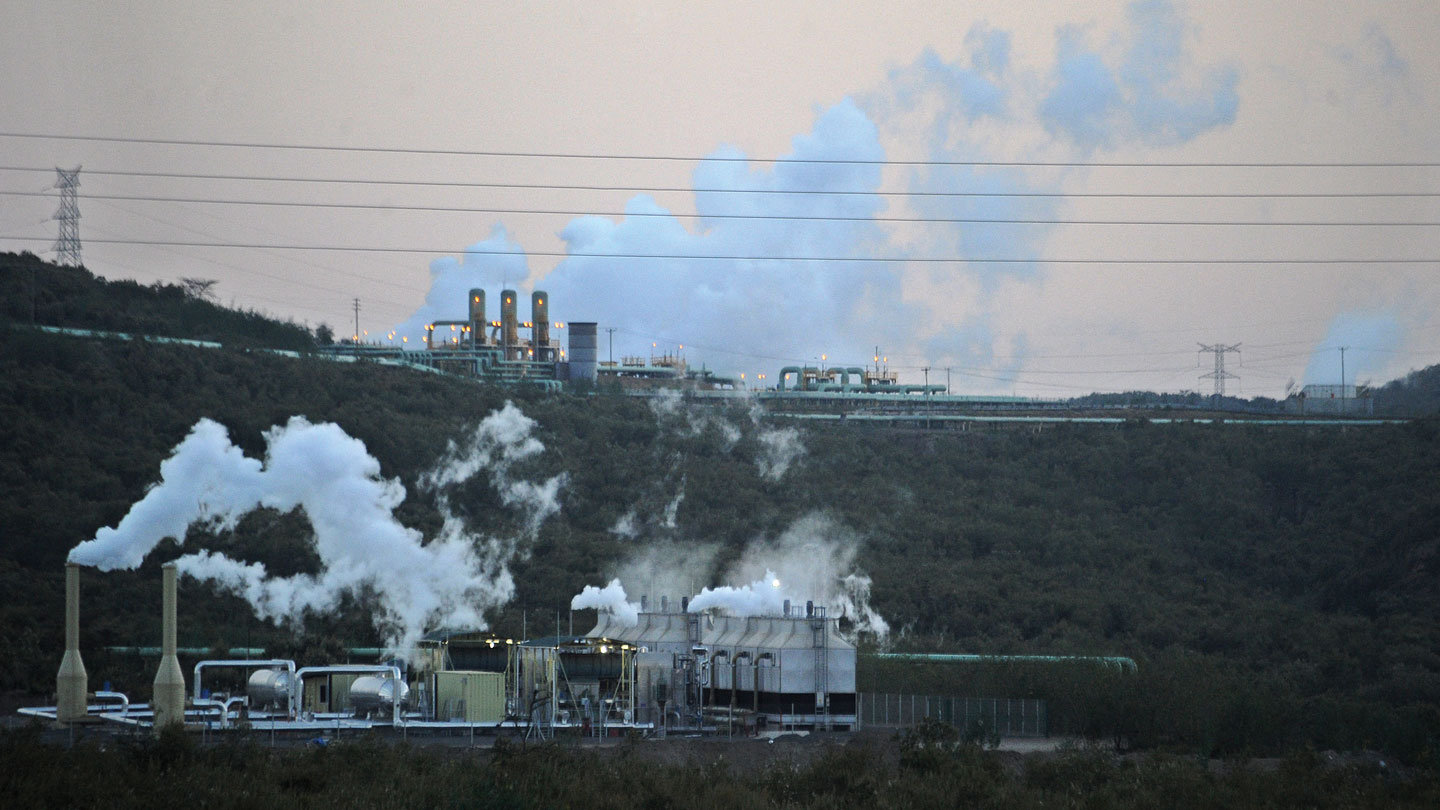The dusty town of Naivasha sits within the Great Rift Valley, where the African continent is being divided into two. About 90 kilometers northwest of Kenya’s capital city of Nairobi, Naivasha welcomes gaggles of tourists each year trekking to Hell’s Gate National Park. The forces that are splitting apart the African tectonic plate have sculpted the area’s steep cliffs, plummeting valleys and undulating hills — a rugged landscape that inspired the backdrop of Disney’s The Lion King.
The country’s first geothermal well was drilled there in the 1950s. By 1981, Kenya had its first geothermal power plant, harnessing a renewable resource that taps into heat generated deep within the Earth. Today, Naivasha’s Olkaria geothermal power project plus a small facility at another site are capable of generating 963 megawatts of electricity when running at full power.
At the end of last year, Kenya ranked seventh on the list of top geothermal energy countries in the world. Geothermal accounts for 47 percent of the country’s total energy production — a percentage that’s growing. The only other geothermal energy producer in Africa, Ethiopia, started production in 1998 and has an installed capacity of just 7.5 megawatts.
But regional interest is growing, especially as Africa works toward universal energy access by 2030, in accordance with the United Nations’ Sustainable Development Goals. Roughly 43 percent of the continent’s population, equaling about 600 million people, lacks access to electricity. A 2021 analysis by the Dalberg consulting firm in partnership with the U.N. showed that there’s enough renewable energy potential to power Africa’s energy needs well into the future, though the up-front costs would be higher than if fossil fuels were used to meet those energy demands.
2023-07-12 10:00:00
Source from www.sciencenews.org
